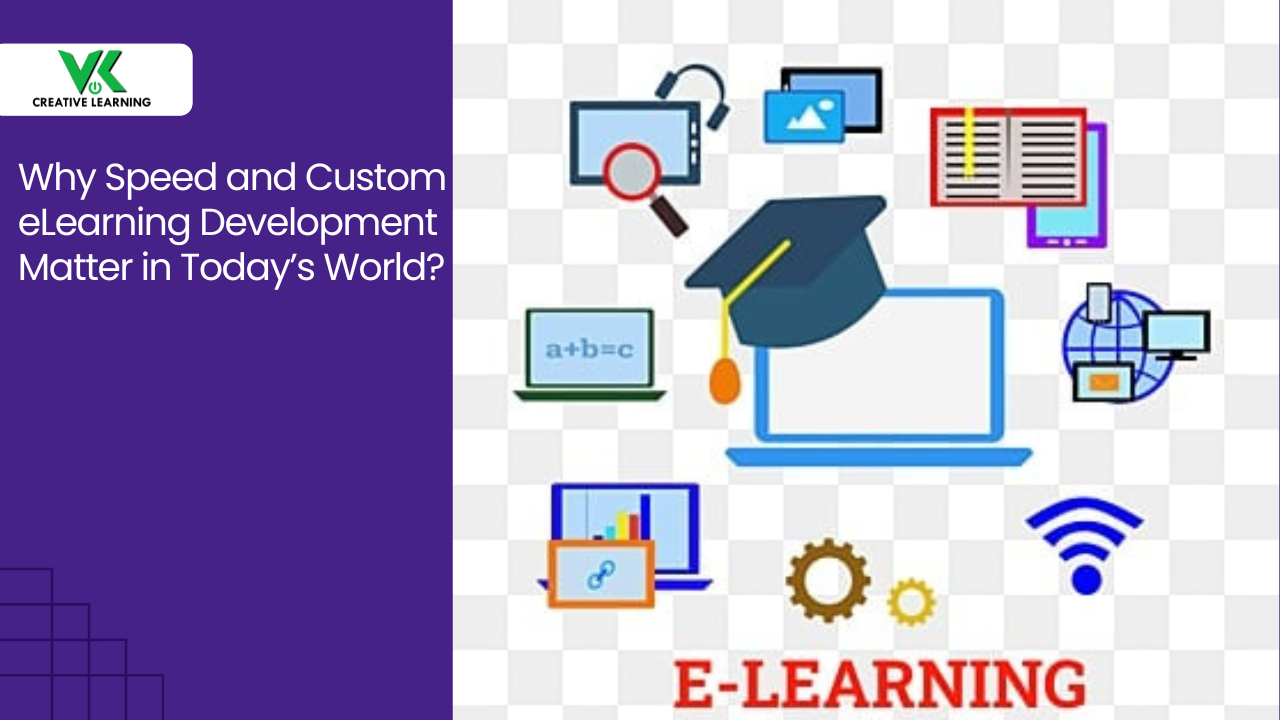eLearning Internationalization vs Localization, and where to Use When?
November 30, 2022
Are you looking for ways to make your eLearning courses more accessible to learners around the world?
If so, you might want to consider eLearning localization and eLearning internationalization.
eLearning localization is the process of translating and adapting eLearning content to meet the needs of learners in a specific geographic region.
eLearning internationalization is the process of designing eLearning content that can be easily translated and adapted for different global markets.
Both eLearning localization and eLearning internationalization can help you reach more learners, improve engagement, and boost completion rates.
Thus, eLearning internationalization and localization is the process of identifying and addressing regional differences in how language is used worldwide. There are three primary considerations for eLearning internationalization and localization: project vertical, target regions, and linguistic features.
In this blog post, we’ll introduce you to eLearning localization and eLearning internationalization, and show you how they can benefit your eLearning strategy.
What is eLearning internationalization?
eLearning internationalization is the process of designing and developing eLearning content that can be easily translated and adapted for different cultures. This includes taking into account the different needs and expectations of learners in different countries, as well as ensuring that the eLearning content is accessible to learners with diverse backgrounds and abilities.
When done properly, eLearning internationalization can help you create more effective and engaging eLearning courses that reach a global audience. It can also save you time and money by making it easier to translate and adapt your courses for different markets.
What is eLearning localization?
eLearning localization is the process of making eLearning content accessible to learners in different languages and cultural contexts. This process can involve translating text, graphics, audio, and video content as well as designing culturally appropriate user interfaces.
When localizing eLearning content, it is important to consider the different ways that people learn. Some learners may prefer visual resources while others may prefer auditory or kinesthetic resources. It is also important to consider the different learning styles of your target audience. For example, some learners may be more analytical and prefer step-by-step instructions while others may be more intuitive and need only a general overview of the material.
Technological aspects to consider for eLearning localization
Your eLearning localization strategy should also take into account the different technologies that learners will be using. For example, if you are targeting mobile learners, you will need to consider how your content will be formatted for small screens. You will also need to consider whether your content will need to be downloaded or streamed and whether it will need to be compatible with different types of devices (e.g., smartphones, tablets, laptops).
Finally, you should think about the logistics of managing your localized eLearning content. For example, you will need to decide who will be responsible for translating and updating your content on an ongoing basis. You will also need to establish clear communication channels between yourself and your team of localization experts.
Which one should I choose, Internationalization or Localization?
When it comes to e-learning projects, internationalization and localization are two terms that are often used interchangeably. However, there is a big difference between Internationalization or Localization. Internationalization is the process of designing and developing a product or service that can be easily adapted to various cultures and markets around the world. Localization, on the other hand, is the process of tailoring a product or service to a specific market or culture.
So, which one should you choose for your e-learning project? It really varies depending on what you're looking to get out of the eLearning course or program. If you want to create a product or service that can be easily adapted to different markets and cultures, then internationalization is the way to go. If you want to tailor your product or service to a specific market or culture, then localization is the better option.
When internationalization and localization are beneficial?
When internationalization and localization are beneficial, they can save organizations a lot of time and money. In fact, these strategies can be so beneficial that some companies decide to make them a standard part of their operations.
Here are some specific benefits of implementing internationalization and localization:
1. You'll be able to better serve your global audience.
2. You'll be able to save money by avoiding duplicative work.
3. You'll be able to manage updates and changes easily.
4. You'll be able to create a more consistent user experience.
5. You'll be able to better protect your brand and intellectual property.
The Elements of eLearning Localization
There are several elements to consider when localizing your eLearning courses, including:
1. Language
The first and most obvious element to consider is language. You need to make sure your courses are translated into the local language of your target audience.
2. Culture
It’s also important to consider the local culture when creating eLearning courses. What are the customs and traditions of your target audience? What do they find offensive?
3. Images and Graphics
The images and graphics in your courses should also be localized. This means using images that are culturally relevant and appropriate for your target audience.
4. Audio and Video
If you are using audio or video in your courses, you need to make sure it is properly localized. This includes translating the audio and video into the local language and using culturally relevant images and graphics.
5. Navigation and Interface
The navigation and interface of your courses should be easy to understand for your target audience. This means using local terms and concepts and avoiding anything that could be confusing.
The Elements of eLearning Internationalization
There are four key elements of eLearning internationalization:
1. Language
2. Culture
3. Pedagogy
4. Technology
Let’s have a closer look at each of the elements of eLearning Internationalization
1. Language
The first element of eLearning internationalization is language.
When you make your eLearning courses available to learners in different countries, you need to make sure they can understand the content.
This means translating your courses into the learners’ native languages.
2. Culture
The second element of eLearning internationalization is culture.
When you are creating eLearning courses for a global audience, you need to be aware of the different cultures and customs around the world.
For example, you might need to adjust your courses for different time zones, holidays, and social norms.
3. Pedagogy
The third element of eLearning internationalization is pedagogy.
This refers to the way you teach your courses.
When you’re creating eLearning courses for a global audience, you need to make sure your pedagogy is culturally appropriate.
For example, you might need to use different teaching methods for learners in different cultures.
4. Technology
The fourth and final element of eLearning internationalization is technology.
When you’re making your courses available to a global audience, you need to use technology that’s accessible to everyone.
This means using technologies that are compatible with different devices, operating systems, and browsers.
Conclusion:
Internationalization and localization are two important factors to consider when planning e-learning projects. By understanding the differences between the two, you can ensure that your project is accessible to learners around the world.
VK Creative Learning (VKCL) is a reputed company that can offer both internationalization and localization. VKCL ensures that your internationalization content can be easily translated into other languages, while its localization service takes into account cultural differences so that learners can better understand and engage with your content. By taking both of these factors into consideration, VKCL can create a more inclusive e-learning experience for all your students.




